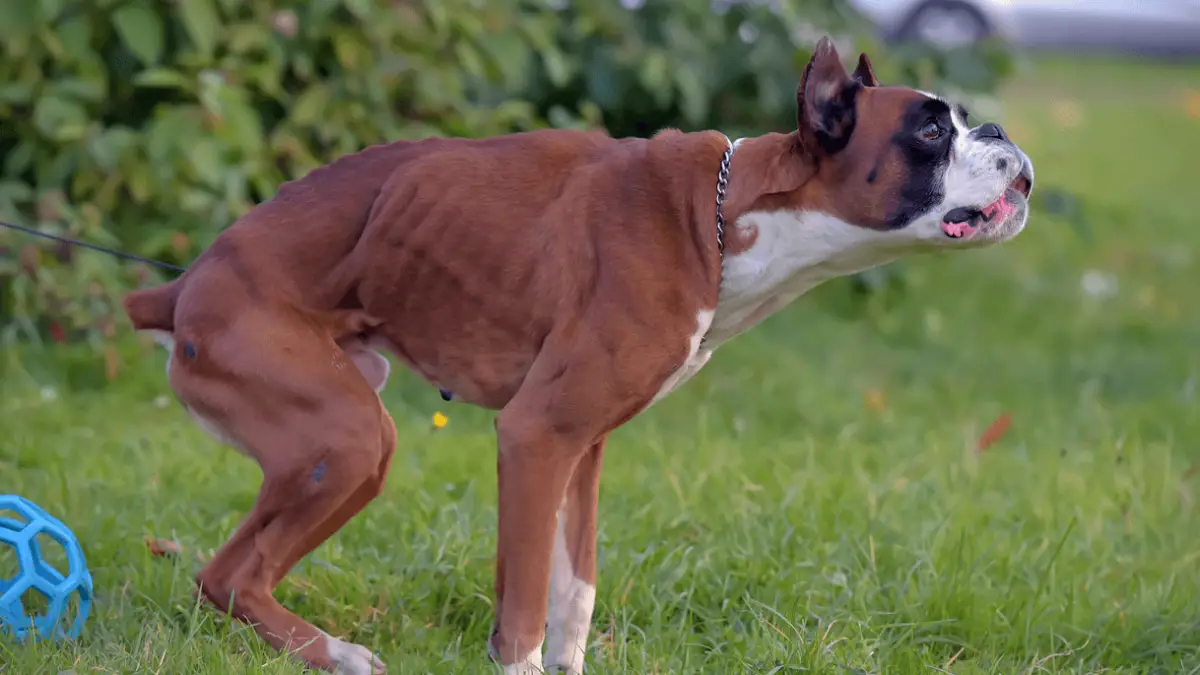Anorexia in Dogs: Causes, Diagnosis & Treatment
14.05.2022.
There's nothing uncommon about dog owners wanting what's best for their dogs. We all want our furry best friends to be healthy, happy, and stay with us as long as possible. When something worrying happens, and our dogs start avoiding their food, we all get worried. Sometimes dogs don't want to eat, and there's nothing too unusual about it.
However, sometimes, not eating can point to severe medical issues. One of the things that can happen is anorexia. This article will cover the main reasons dogs develop anorexia, its treatments, and its symptoms. Here's what you should know about anorexia in dogs.
What is anorexia in dogs?
Anorexia is characterized by a lack of interest in or desire for food. Appetite, in contrast to hunger, is mentally fueled. If you notice a decrease in your appetite and food intake, it is important to seek medical attention.
True anorexia and "pseudo-anorexia" are two distinct disorders. However, a dog with pseudo-anorexia wants to eat but can't because they have problems chewing, picking up, swallowing, or some other reason we will mention a little later. Any decrease in food intake, regardless of whether it is due to true or pseudo-anorexia, should be taken seriously. These symptoms could signify a more serious condition that could endanger your dog's life. Poor appetite or eating refusal is one of the most common reasons dog owners seek veterinary care, and they are strongly linked to illnesses.
What causes them?
The first step vets usually take is determining whether the dog developed true or pseudo-anorexia, which is also the most critical step in the process. There is a significant difference between dogs that have the will to eat but can't, and dogs that simply don't want to eat.
Pseudo anorexia causes
Pseudo-anorexia, where a dog desires food but is unable or unwilling to eat, can be explained by the following:
- Mouth and throat inflammation and pain.
- Symptoms of advanced periodontal disease, such as loose teeth.
- An abscess in the eye sockets.
- Mastication (chewing) muscle discomfort.
- Temporomandibular joint (TMJ) pain.
- A disease of the salivary glands.
- A nervous system disease that affects the ability to chew and swallow.
- Mouth, tonsil, tongue, or associated structures cancer or tumors.
- Generalized pain. Chronic pain can be very debilitating. It can affect a dog's ability to eat or drink, especially if they suffer from pain in the back area.

True anorexia causes
True anorexia can be caused by various possible causes.
- Systemic disease, including infection and organ system dysfunction (such as kidney issues or diabetes).
- Changes in routine, environment, or food the dog finds untasty.
- Toxications.
- Unbalance or disease of the immune system.
- The inability to smell. Food's ability to entice dogs and keep them full is greatly influenced by its aroma.
- Conditions that cause the dog pain.
- Various types of cancer.
- Constipation.
- Ulcer in the stomach or intestines.
- Nausea.
- High temperature.
- Adverse effects of medication.
How do vets diagnose it?
A thorough medical history will help your veterinarian distinguish between the two possible types of anorexia. After that, a full physical examination will be performed on your dog to see if there is any obvious physical cause for the decreased appetite. In the end, vets can perform various diagnostic tests that will help them find out what is causing a dog's decreased hunger. Invasive diagnostics such as endoscopy or biopsies may be performed in conjunction with less invasive methods such as serum chemistry profiles and complete blood count, as well as an electrolytes balance check.
RELATED: Best Appetite Stimulants for Dogs
What is the treatment for anorexia and pseudo-anorexia?
The treatment plan will be determined by the specifics of the diagnosis. Treating or managing related symptoms is an important part of any additional or supplementary treatment plan. IV fluids might be necessary if dehydration happens. It is necessary to get rid of any nausea. Cyproheptadine or mirtazapine may be prescribed by your veterinarian if necessary. These drugs are short-term appetite stimulants that can be used as a quick solution.

A newer medication developed right here in the US called capromorelin (Entyce) has fantastic results. A potassium supplement is often given to dogs with anorexia because there is usually a mineral imbalance, especially low potassium. That can interfere with a dog's normal appetite. Your dog's food may benefit from a little extra appeal. Ideally, you should consult with your veterinarian, but here are a few things you can try in the meantime:
- Add wet dog food for palatability.
- Food should be heated to a temperature similar to the dog's body (about 100°F [38°C]).
SAFETY TIP: Stirring the food while it's being heated helps prevent the formation of hot pockets.
- The addition of a small amount of unseasoned chicken, beef, or vegetable broth can boost the dog's appetite.
- Preparing a temporary home-cooked diet with the help of your veterinarian.
RELATED: Here Are 7 Ways to Naturally Stimulate Appetite in Dogs
An anorectic dog with an underlying metabolic disorder may occasionally need to be given nutrients that they will not want to eat. In these cases, your veterinarian may need to make a tiny incision and insert a feeding tube. They are typically inserted in the dog's nose, stomach, or even the small intestine. Feeding tubes are no one's favorite procedure, but in most cases, they are life-saving. They make it possible to administer food and medication to dogs in a stress-free manner. A dog's digestive system should be used for feeding whenever possible, even if it means using a feeding tube for some time.
Vets may recommend parenteral feeding, in which nutrients are administered intravenously if the gastrointestinal system is malfunctioning. It is a specialized procedure that requires a specialist procedure in a specialized center. Parenteral nutrition and tube feeding are frequently used as "bridge" procedures. That means these procedures are in place only until the dog starts eating independently.
RELATED: Should You be Worried if Your Dog Sleeps All Day?
In conclusion
Changes in eating patterns and habits should be investigated regardless of the cause. Loss of appetite can be a sign of a more serious problem. It can also have serious consequences or outcomes of its own. Get your veterinarian involved as soon as you notice a change in your dog's eating habits.
World Dog Finder team







Share